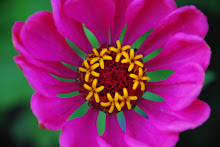Greetings gardening friends!
In autumn there is much to be done in the edible garden to clean up and prepare for the next year. This is an ideal season for organic no-till methods to promote a healthy and abundant edible garden. Along with planting cover crops, the sheet mulching technique in the fall will assist the gardener all winter long preparing your garden for spring planting time.
I have used sheet mulching, also known as lasagna mulching, extensively in a variety of garden environments during the past 15 years. I have used sheet mulching at the bottom of newly built raised beds and in existing raised beds in the fall to enrich the soil. Utilizing sheet mulching in the fall over lawn is an excellent way to create a new edible garden by composting in place and not even needing to remove pesky grass. Have you ever tried to remove grass to plant a garden? I have and it is back breaking work. Trust me, the sheet mulching technique is way less physically demanding and by using natural materials from around your yard is cost effective.
Sheet mulching does not have to be complicated and I find it a rather simple way to create a new garden or enhance an existing garden rich in delicious organic matter. The basic technique is to add layers of carbon and nitrogen rich natural materials on soil or directly on grass to compost in place.
Sheet mulching functions much like a compost pile, and it is important to have a balance of nitrogen and carbon materials. Here are some examples of natural sources of nitrogen and carbon.
Nitrogen: grass clippings (free of chemical herbicide & fertilizer), pruned perennial and shrub material that is soft and green, manure (chicken, pig, horse, cow—never cat or dog), coffee grounds, fruit and vegetable scraps, alfalfa meal, kelp meal, blood meal, and bat guano.
Carbon: newspaper (black & white only, not glossy & color pages), cardboard (tape removed), dried leaves, small branches, wood chips, bark mulch.
Here is the approximate formula I use for sheet mulching:
1.Cut any tall vegetation and leave it in place. Poke holes in the ground with garden fork. Add to top a sprinkle of organic fertilizer high in nitrogen like-alfalfa meal, bat guano, blood meal, or cottonseed meal. Kelp meal has tons of trace minerals and I like to also add it. If you are going to use animal manure I would spread it here. Soak this first layer well with water.
2.Add several layers of newspaper and then a layer of cardboard. If you are using small branches layer them on top of the cardboard. Soak this second layer well with water.
3.Add a thick layer of nitrogen, at least 1-foot thick loaded with fruit & vegetable scraps, green plant pruning, and grass clippings. Soak this third layer well with water.
4.Add a layer of dried leaves and soak this fourth layer well with water.
5.Add a 1-3 inch layer of finished compost. This is important to introduce beneficial organisms like bacteria and fungi. Soak this fifth layer well with water.
6.Lastly add a finishing layer to your pile. You can use topsoil or bark mulch to cover it and keep it looking tidy. Or spread on topsoil and sow cover crop seeds directly into the topsoil. Soak this final layer well with water.
In my experience it takes about 6 months for a sheet mulching pile to completely compost down.
Super simple, isn't it? When I’ve built a sheet mulching pile in September or October it was ready to be planted by early the next spring. I guarantee you will be delighted when you see the sheet mulching pile magically broken down into glorious rich compost.
This year autumn after I harvested and cleaned up my raised beds I built a sheet mulching pile on top of the soil and covered it with a frost blanket. I am super excited to see how lovely and healthy the raised bed soil is after a restorative winter. And I'm already dreaming of March planting into the luscious compost kale, lettuce, spinach, peas....
Happy gardening,
Jolie
Sunday, October 15, 2017
Subscribe to:
Post Comments (Atom)










No comments:
Post a Comment